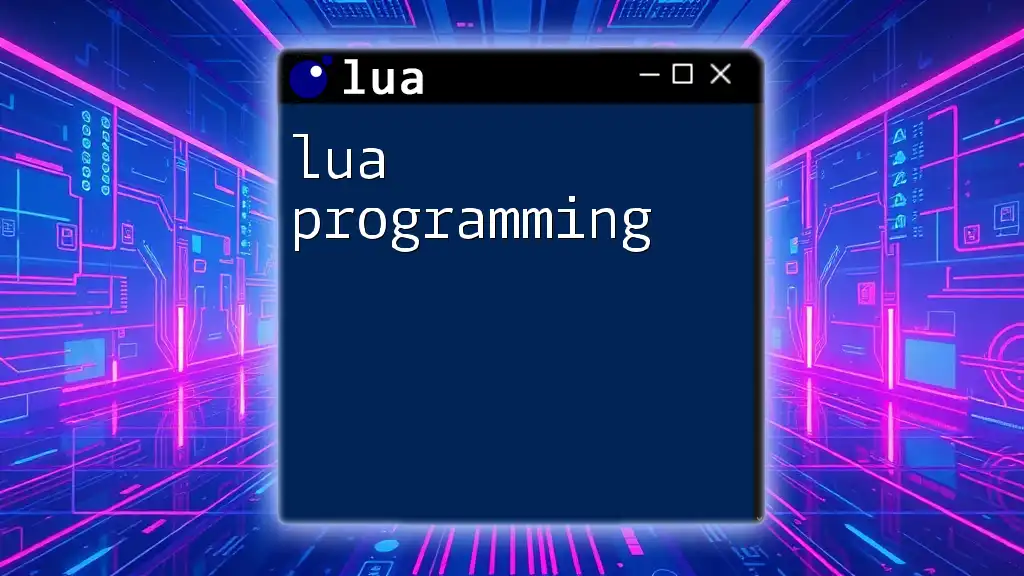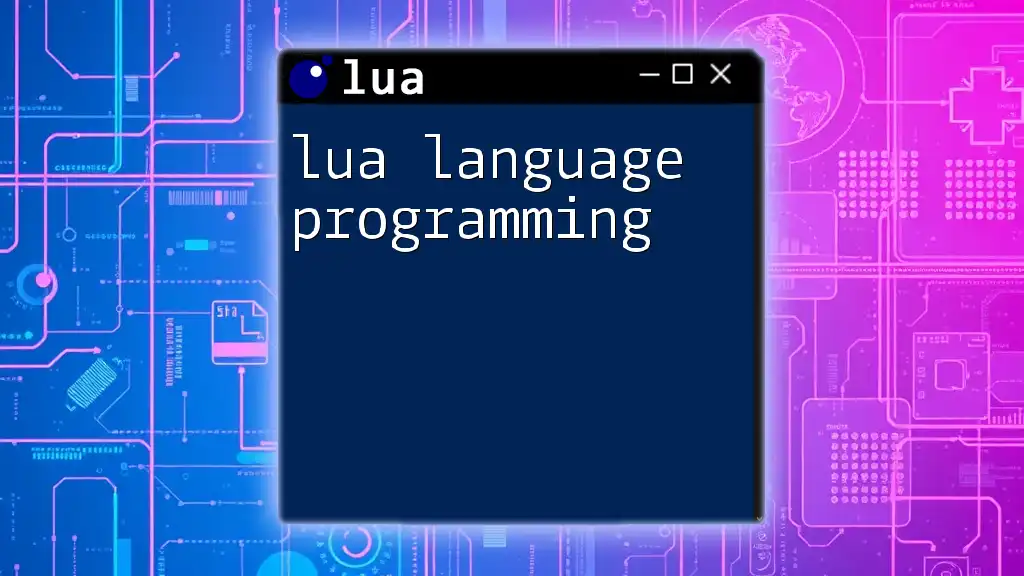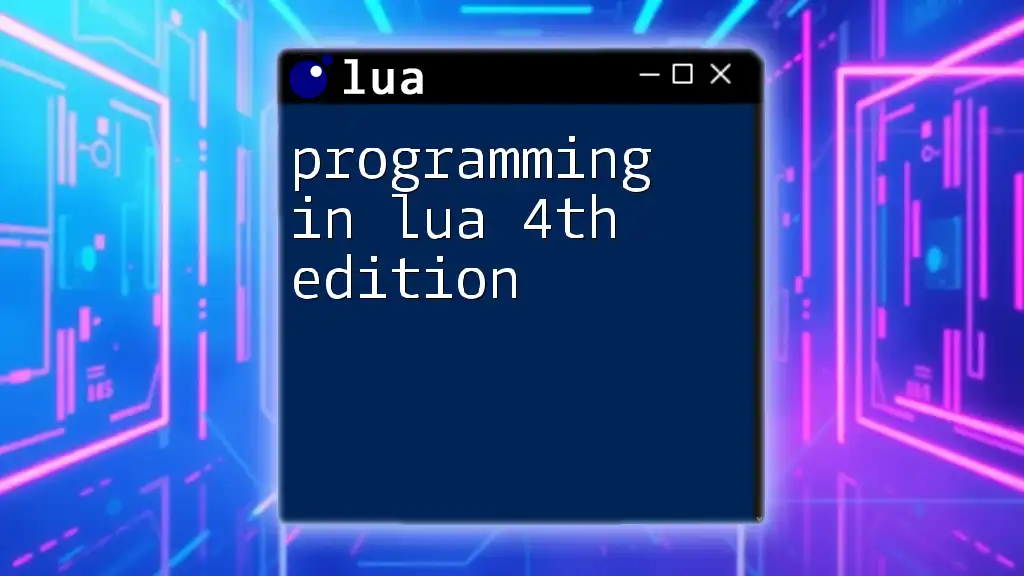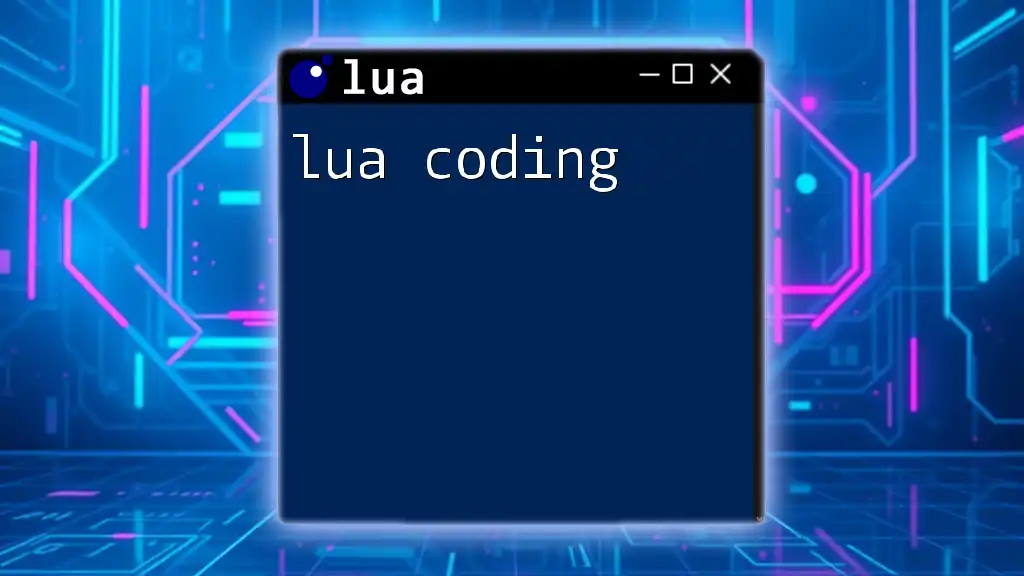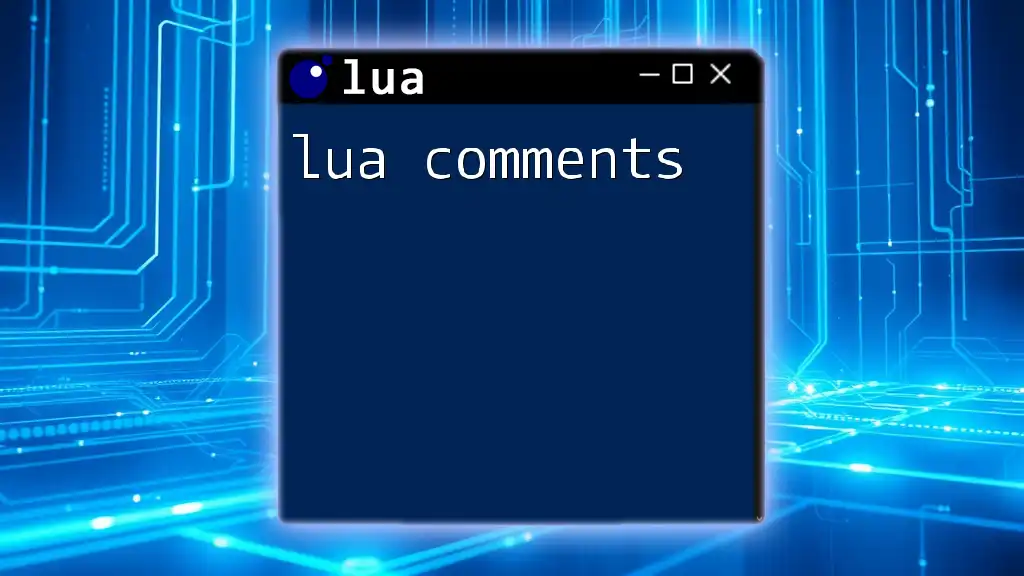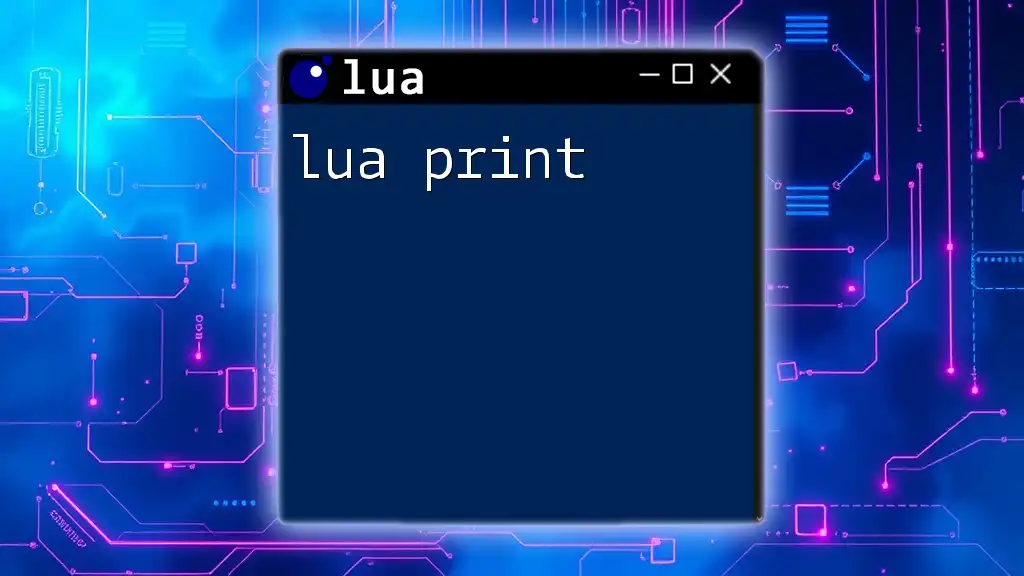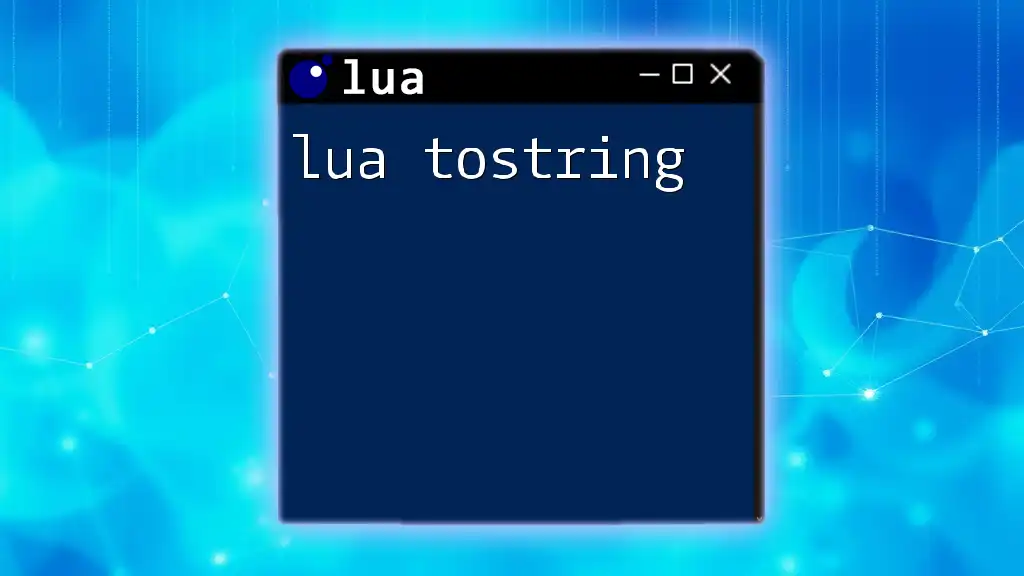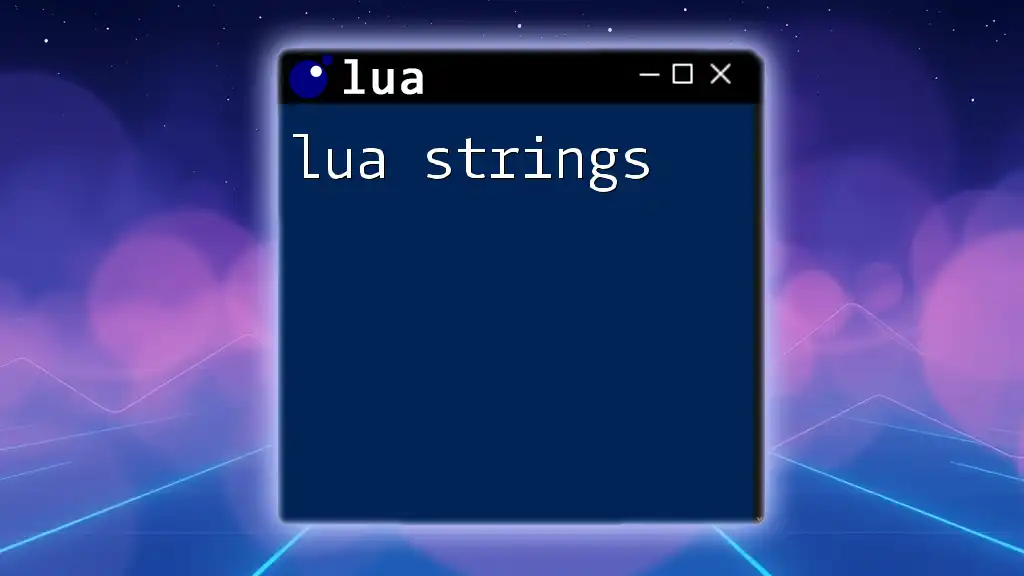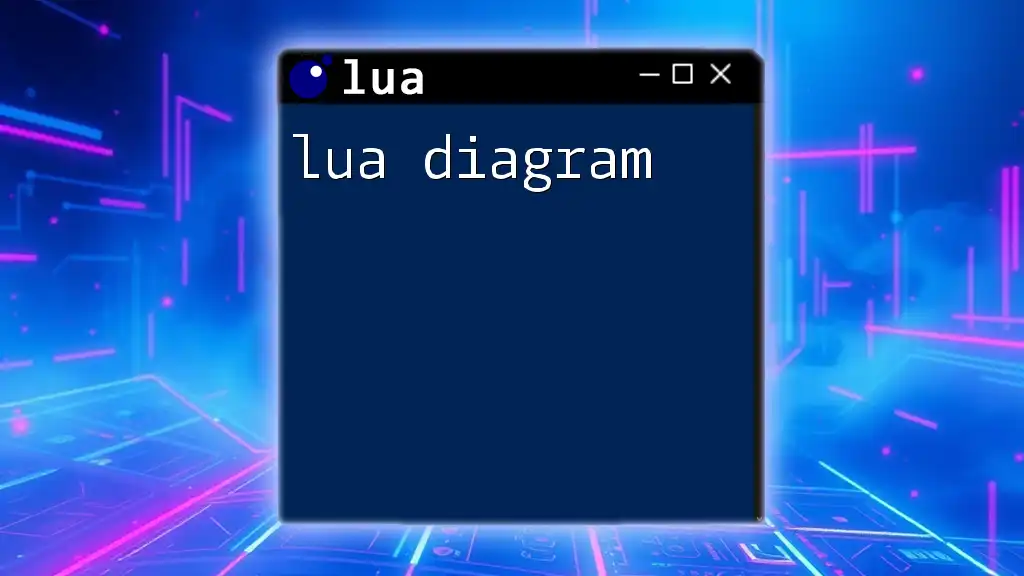Lua is a lightweight, high-level programming language widely used for scripting and embedded applications, known for its simplicity and efficiency.
Here’s a basic example of defining a function and calling it in Lua:
function greet(name)
return "Hello, " .. name .. "!"
end
print(greet("World"))
What is Lua?
Lua is a lightweight, high-level programming language designed for embedding in applications. Founded in 1993 at the Pontifical Catholic University of Rio de Janeiro, Brazil, Lua’s design philosophy emphasizes simplicity, efficiency, portability, and ease of use. Lua's versatility allows it to be used across various domains, from video game development to web programming and beyond.
Why Choose Lua?
One of the key advantages of Lua is its efficient and modular design, which makes it an excellent choice for embedding within other applications. The language boasts a small footprint, allowing it to run on devices with limited resources. Additionally, its ease of integration with languages such as C and C++ makes it accessible and versatile for developers looking to extend existing applications.
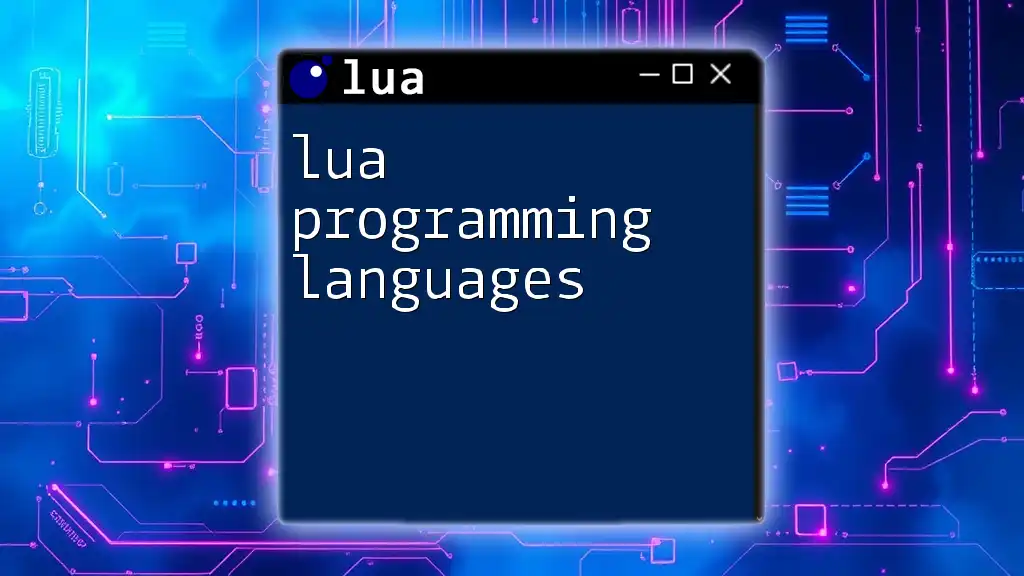
Setting Up Your Lua Environment
Installing Lua
Before diving into Lua programming, you need to set up your environment. Here’s a brief guide for installing Lua on various operating systems:
- Windows: Download the Lua binaries from the official Lua website, extract them, and add the folder to your system's PATH environment variable.
- macOS: You can use Homebrew by running `brew install lua` in the terminal to install Lua easily.
- Linux: Most Linux distributions allow you to install Lua using the package manager. For Ubuntu, use:
sudo apt-get install lua5.3
Choosing an IDE or Text Editor
While Lua can be coded in any text editor, several IDEs and text editors can enhance your coding experience. Popular options include:
- ZeroBrane Studio: A lightweight IDE specifically designed for Lua, featuring debugging tools, code completion, and integrated documentation.
- Visual Studio Code: With Lua plugins, you can turn this popular editor into a robust environment for Lua development.
- Sublime Text: Offers excellent syntax highlighting and snippets for Lua.
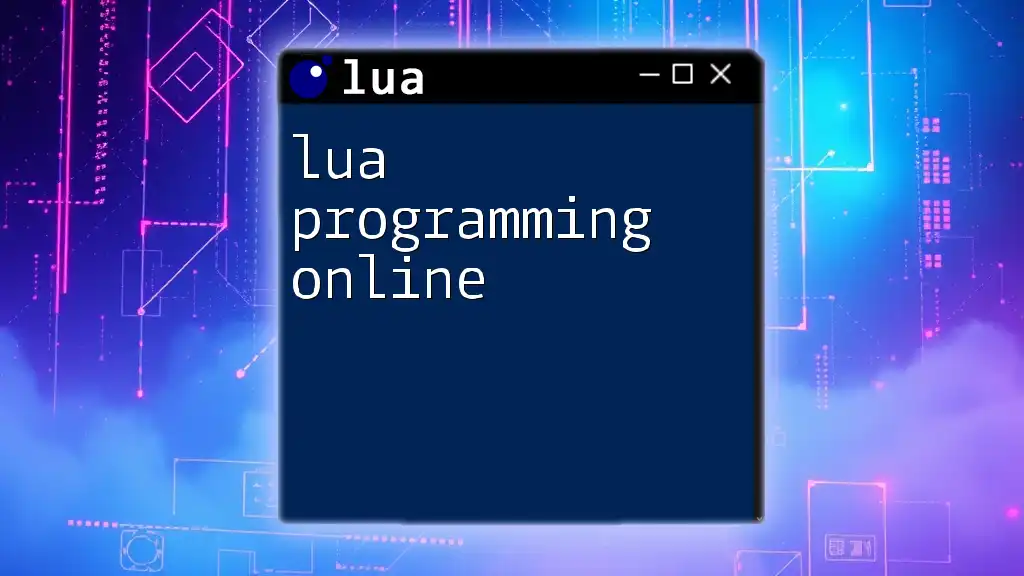
Basic Syntax and Data Types
Understanding Basic Syntax
Start your Lua programming journey with a simple program to display "Hello, World!"
print("Hello, World!")
This snippet demonstrates how Lua uses the `print` function to output text to the console.
Data Types in Lua
Lua offers various data types, each serving different purposes:
-
Numbers: Lua supports both integers and floats.
local x = 42.5 -
Strings: Text data is represented using double or single quotes.
local greeting = "Hello, Lua" -
Booleans: This type can either be `true` or `false`.
local isActive = true -
Tables: A fundamental data structure in Lua, tables can act as arrays, dictionaries, or even objects.
local colors = {"red", "green", "blue"} -
Functions: Functions are first-class values and can be assigned to variables.
local function add(a, b) return a + b end -
Threads: Used for coroutine management in Lua.
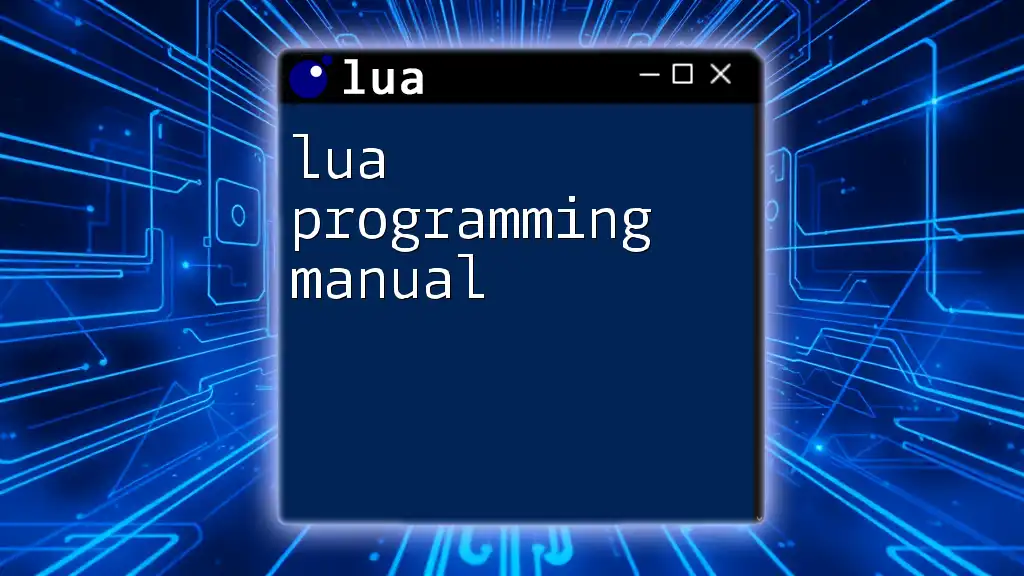
Control Structures
Conditional Statements
Conditional statements in Lua enable branching logic. The structure of an `if` statement looks like this:
local age = 18
if age >= 18 then
print("You are an adult")
else
print("You are a minor")
end
This example checks the value of `age` and executes different code based on the condition.
Loops in Lua
Loops allow you to execute code multiple times. Lua features several loop types:
-
For Loop: Ideal for a predetermined number of iterations.
for i = 1, 5 do print(i) end -
While Loop: Executes as long as the condition remains true.
local i = 1 while i <= 5 do print(i) i = i + 1 end -
Repeat-Until Loop: Similar to a while loop but checks the condition after executing the block.
repeat print(i) i = i + 1 until i > 5

Functions
Defining Functions in Lua
Functions are a foundational aspect of Lua programming. You define a function with the `function` keyword:
function greet(name)
return "Hello, " .. name
end
print(greet("Lua Learner"))
In this snippet, the function `greet` takes a parameter and compiles a greeting message.
Variable Scope
Understanding scope is crucial in Lua. Variables can be `local` or `global`. A local variable is declared within a function or block, making it invisible outside that scope, enhancing encapsulation.
function myFunction()
local x = 10 -- Local variable
end
-- print(x) This would result in an error because x is not accessible here.

Tables: The Core Data Structure
Creating and Manipulating Tables
Tables are Lua's primary data structure and can serve multiple purposes, such as arrays or dictionaries. Here’s how to create and use them effectively:
local fruits = {"apple", "banana", "cherry"}
print(fruits[1]) -- Output: apple
You can also manipulate tables using common metamethods like `table.insert`:
table.insert(fruits, "orange")
Dictionary-style Tables
Tables in Lua can support key-value pairs, functioning similarly to dictionaries in other programming languages:
local person = {name = "John", age = 30}
print(person.name) -- Output: John
This enables you to group related data effectively.
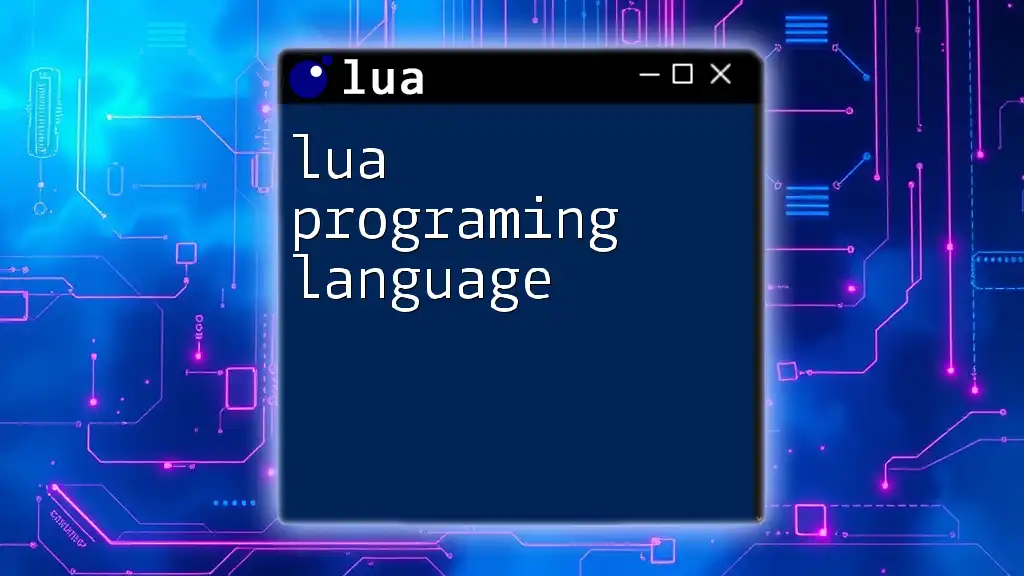
Error Handling
Introduction to Error Handling in Lua
Lua provides mechanisms for error handling to enhance robustness. The `pcall` (protected call) function can execute a function and catch errors without crashing the program.
function safeFunction()
error("This is a custom error")
end
pcall(safeFunction) -- This will not terminate the program despite the error
Creating Custom Error Messages
You can create meaningful error messages that aid in debugging and provide context for failures. Use the `error` function to raise custom errors that help developers understand issues better.
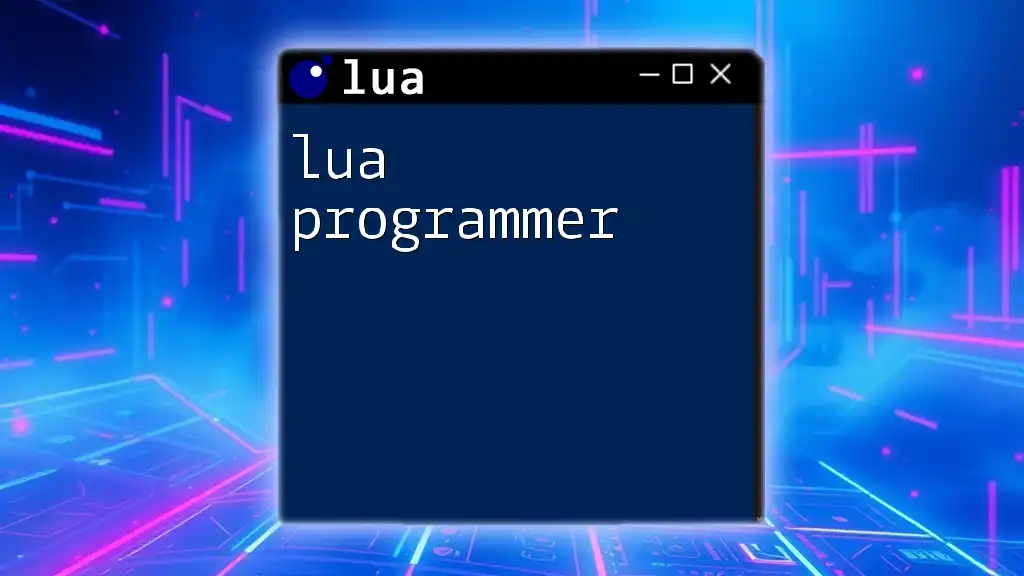
Lua Libraries and Modules
Using Built-in Libraries
Lua comes with several built-in libraries that extend its capabilities. Some commonly used libraries include:
- string: For string manipulation functions.
- math: For mathematical operations (e.g., `math.sqrt`).
- table: Contains functions for table manipulation.
Creating and Using Modules
Creating your own Lua module allows for organized code management. Here’s how:
-- mymodule.lua
local M = {}
function M.sayHello()
print("Hello from my module")
end
return M
Importing and Utilizing Modules
You can then import and use this module in your Lua program as follows:
local mymodule = require("mymodule")
mymodule.sayHello() -- Output: Hello from my module
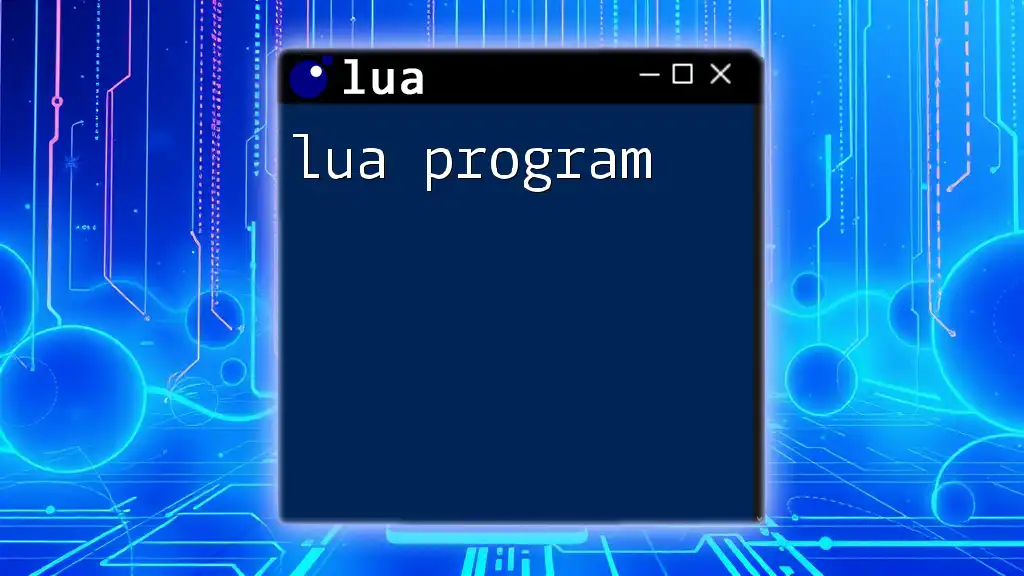
Practical Applications of Lua
Using Lua in Game Development
Lua programming shines in game development. Its lightweight nature and flexible integration make it the scripting language of choice for engines like Love2D and Roblox, allowing developers to write gameplay logic and create game mechanics efficiently.
Lua in Web Development
Lua also finds a home in web development through frameworks like Lapis and Sailor. These frameworks leverage Lua’s speed and efficiency, allowing developers to create dynamic web applications with minimal overhead.

Conclusion
In summary, Lua programming offers a powerful yet straightforward toolset for developers. It combines simplicity with robust features, making it suitable for various applications from gaming to web services. With a solid understanding of its syntax, data structures, and error handling, you can effectively harness Lua's capabilities.
Further Learning Resources
For those eager to dive deeper into Lua, numerous resources are available, including online courses, official documentation, and community forums. Engage with the community, participate in forums, and challenge yourself with hands-on projects to become proficient.

Additional Resources
Lua has a vibrant community ready to support you. Websites such as Lua.org and forums dedicated to Lua provide ample opportunities for learning and collaboration. Contributing to Lua projects and engaging with peers can significantly enhance your skills.
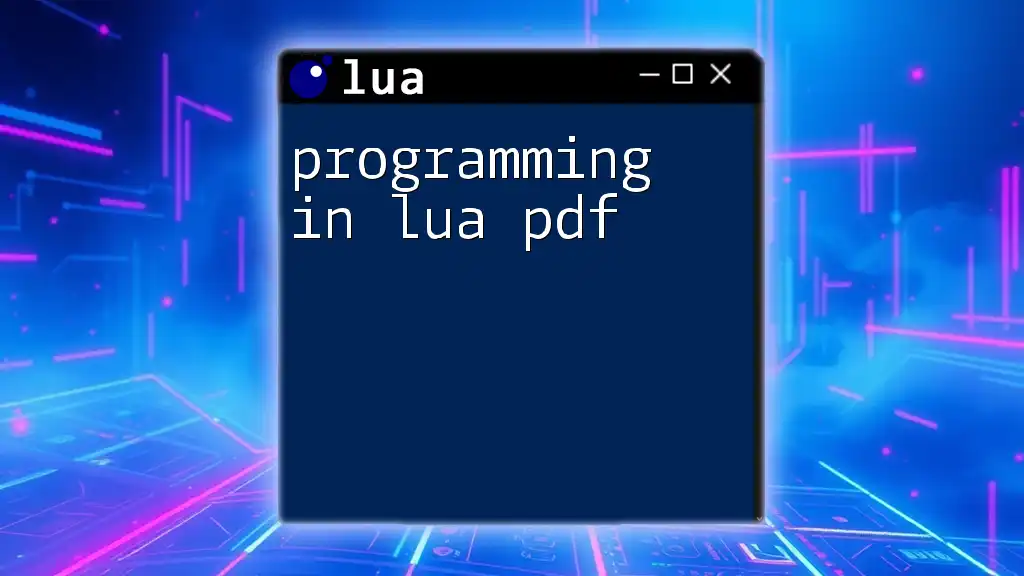
Call to Action
Now that you’re equipped with the essentials of Lua programming, it’s time to start your journey! Check out our courses designed to teach you Lua commands quickly and concisely. Embrace the potential of Lua and build something incredible!

